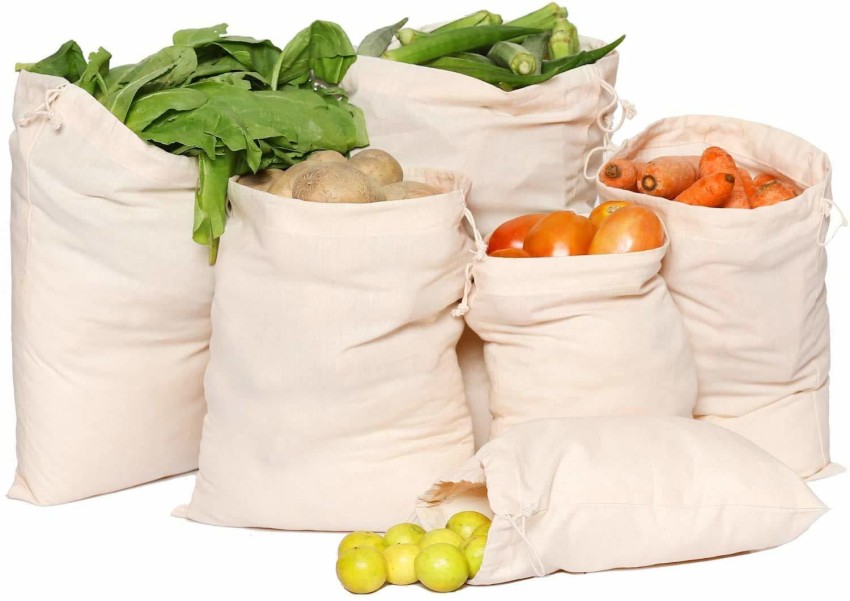
Image Source: Google
Cotton produce bags have gained popularity as a sustainable alternative to single-use plastic bags for carrying fruits and vegetables. These eco-friendly bags are not only reusable but also biodegradable, making them a great choice for environmentally-conscious shoppers. To get more details about cotton produce bags, you can click on this website.
1. Cultivation of Cotton
Before cotton produce bags can make their way to your local grocery store, cotton must be cultivated and harvested. Here are some key points about the cultivation process:
Cotton Farming Process
- Cotton is grown in warm climates with plenty of sunshine and water.
- Farmers plant cotton seeds in prepared fields and carefully monitor the growth of the plants.
- Chemical fertilizers and pesticides are often used in conventional cotton farming, impacting soil health and biodiversity.
Organic Cotton Farming
- Organic cotton is grown without the use of synthetic chemicals, promoting soil fertility and biodiversity.
- Organic farming practices prioritize sustainability and environmental stewardship.
- Organic cotton cultivation helps reduce the overall environmental impact of cotton production.
2. Production of Cotton Fabric
After the cotton is harvested, it is processed and woven into fabric to create cotton produce bags. Here's what happens during the production stage:
Processing Cotton
- Cotton fibers are separated from the seeds through a process called ginning.
- The fibers are then spun into yarn or thread to make fabric.
- Various techniques such as weaving or knitting are used to create different types of cotton fabric.
Sustainable Fabric Production
- Some cotton producers prioritize sustainability by using eco-friendly dyes and manufacturing processes.
- Recycled cotton or upcycled cotton from post-consumer waste can also be used to make fabric.
- Sustainable fabric production reduces the carbon footprint of cotton products.
3. Manufacturing of Cotton Produce Bags
Once the cotton fabric is ready, it is cut and sewn into reusable produce bags. The manufacturing process involves the following steps:
Design and Cutting
- Designers create patterns for different sizes and styles of cotton produce bags.
- The fabric is cut according to the patterns to prepare for sewing.
- Efficient cutting practices help minimize fabric waste in production.
Sewing and Finishing
- Skilled workers sew the fabric pieces together to construct the bags.
- Finishing touches such as hemming and reinforcing seams are added for durability.
- Quality control measures ensure that each cotton produce bag meets the desired standards.
4. Environmental Impact of Cotton Produce Bags
While cotton produce bags are a more sustainable choice compared to single-use plastic bags, they still have environmental implications. Here are some factors to consider:
Biodegradability
- Cotton produce bags are biodegradable and will break down naturally over time.
- This reduces the amount of plastic waste in landfills and oceans.
- Composting cotton bags at the end of their life cycle can further minimize environmental impact.
Water Usage
- Cotton cultivation requires significant amounts of water, especially in water-stressed regions.
- Choosing organic cotton or supporting water-saving initiatives can help reduce the water footprint of cotton products.
- Awareness of water consumption throughout the cotton supply chain is essential for sustainable practices.
5. Conclusion
Cotton produce bags offer a sustainable alternative to single-use plastic bags, promoting reusability and reducing waste. By understanding the journey of cotton produce bags from farm to table, we can make more informed choices as consumers. While there are environmental considerations to keep in mind, the overall impact of cotton produce bags on the environment is positive when compared to plastic alternatives.